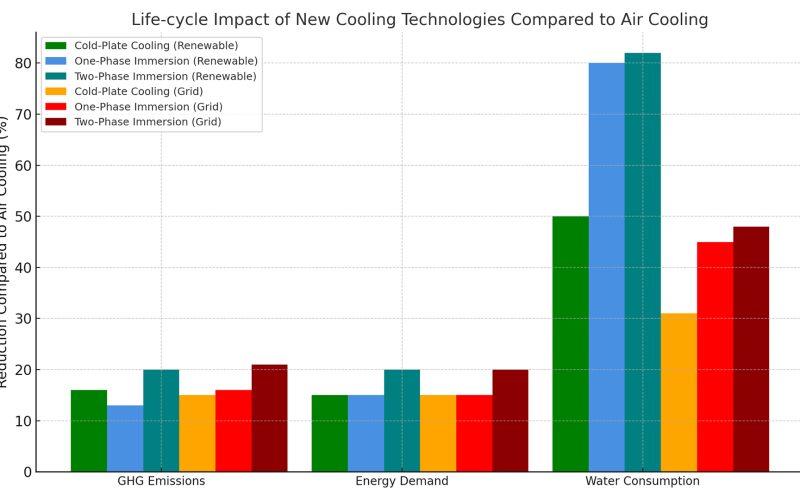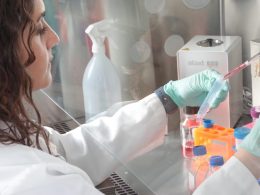Microsoft researchers have published a comprehensive life cycle assessment in Nature that evaluates the environmental impact of four major data centre cooling technologies. The study is the first to quantify greenhouse gas emissions, energy use, and water consumption across the entire life span of data centres – from raw material extraction to equipment disposal.
The analysis extends beyond operational emissions and examines the broader environmental costs of producing virtual machines, chips, servers, and support infrastructure. Researchers argue that this level of scrutiny can inform more sustainable design decisions and should be considered early in engineering processes rather than retroactively.
The assessment found that switching from traditional air cooling to cold plates – a more direct liquid-based cooling system – could cut greenhouse gas emissions and energy consumption by approximately 15%, while reducing water use by 30–50% over a data centre’s lifetime. These figures include not only water used for cooling but also for power generation and manufacturing.
Teresa Nick, co-author of the paper and Director of Natural Systems and Sustainability at Microsoft, noted that cold plates performed comparably to more complex immersion cooling systems, but without relying on potentially problematic substances such as PFAS, which are under regulatory scrutiny in the EU and US.
The study assessed four cooling approaches:
- Air cooling, the current industry standard
- Cold plates, which circulate coolant directly over chips
- One-phase immersion, where servers operate in a tank of liquid coolant
- Two-phase immersion, which uses a boiling and condensation cycle for heat dissipation
Each liquid method showed notable improvements over air cooling, with reductions in emissions and water and energy use ranging from 15% to over 50%. However, Microsoft has not adopted immersion cooling at scale, citing environmental concerns over the fluids used.
Husam Alissa, Director of Systems Technology in Microsoft’s Cloud Operations and Innovation unit and lead author of the study, said the research aims to provide tools the industry can use to perform “apples-to-apples” comparisons when assessing sustainability trade-offs. To that end, Microsoft is making the methodology publicly available through an open research repository, allowing others to input their own data to assess environmental impacts.
The study also modelled the impact of switching energy sources, finding that using 100% renewable power could cut emissions by up to 90% regardless of the cooling technology employed. Microsoft has committed to sourcing the equivalent of 100% of its energy from renewable sources and offsets where local infrastructure limits availability.
The researchers are now working on a follow-up study to analyse the life cycle impact of advanced cooling for AI-specific chips, which are increasingly used in data-intensive cloud computing.
While the financial cost and performance of cooling systems are typically well understood, sustainability impacts remain harder to calculate. The study’s authors argue that greater transparency from suppliers and the creation of shared emissions databases will be essential to improving life cycle assessments across the sector. “In a nutshell, we’re trying to understand the trade-offs,” said Nick. “You’re trying to understand the context of what you’re doing and what the impacts are.”





















